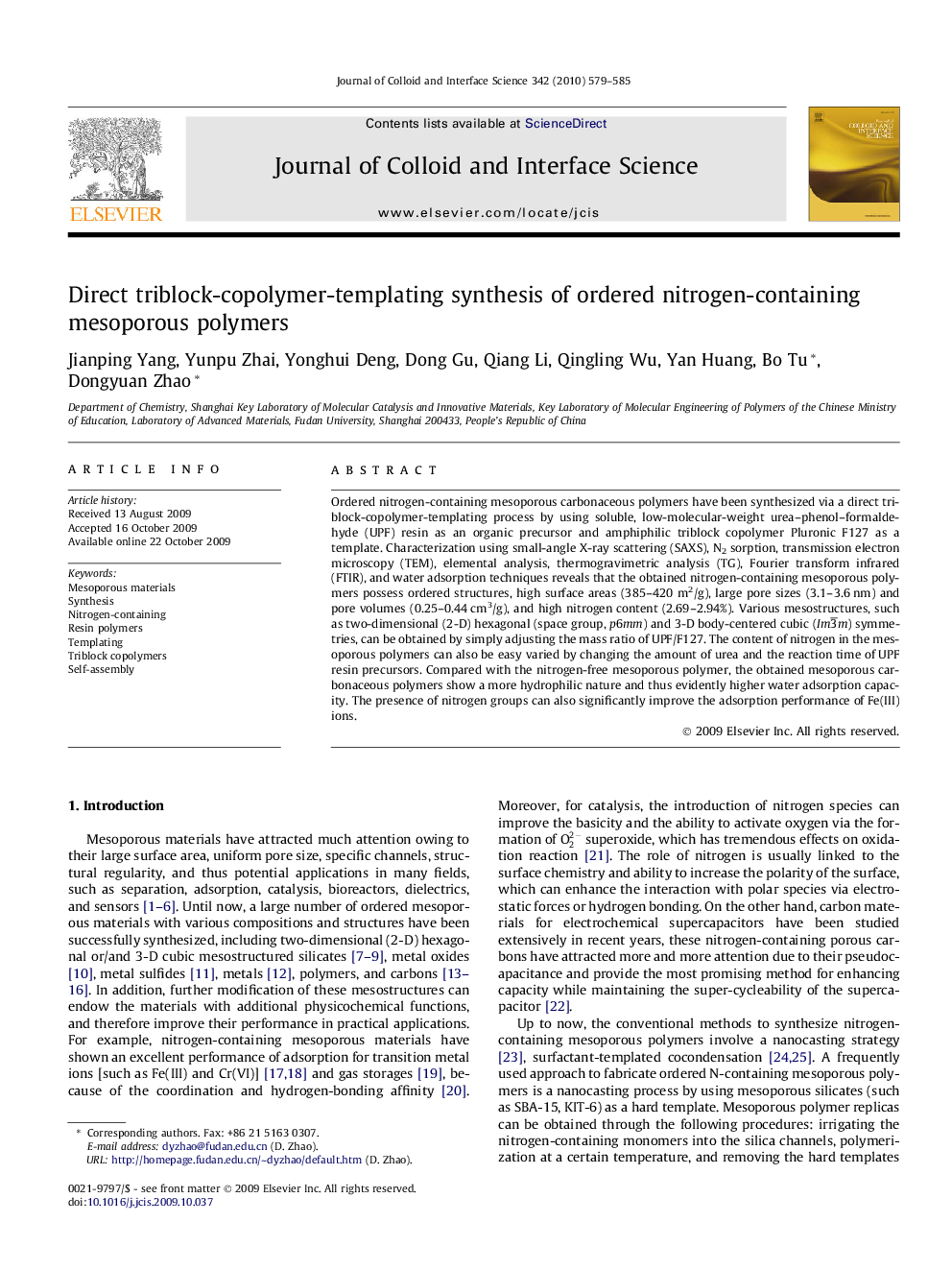| Article ID | Journal | Published Year | Pages | File Type |
|---|---|---|---|---|
| 609561 | Journal of Colloid and Interface Science | 2010 | 7 Pages |
Ordered nitrogen-containing mesoporous carbonaceous polymers have been synthesized via a direct triblock-copolymer-templating process by using soluble, low-molecular-weight urea–phenol–formaldehyde (UPF) resin as an organic precursor and amphiphilic triblock copolymer Pluronic F127 as a template. Characterization using small-angle X-ray scattering (SAXS), N2 sorption, transmission electron microscopy (TEM), elemental analysis, thermogravimetric analysis (TG), Fourier transform infrared (FTIR), and water adsorption techniques reveals that the obtained nitrogen-containing mesoporous polymers possess ordered structures, high surface areas (385–420 m2/g), large pore sizes (3.1–3.6 nm) and pore volumes (0.25–0.44 cm3/g), and high nitrogen content (2.69–2.94%). Various mesostructures, such as two-dimensional (2-D) hexagonal (space group, p6mm) and 3-D body-centered cubic (Im 3¯m) symmetries, can be obtained by simply adjusting the mass ratio of UPF/F127. The content of nitrogen in the mesoporous polymers can also be easy varied by changing the amount of urea and the reaction time of UPF resin precursors. Compared with the nitrogen-free mesoporous polymer, the obtained mesoporous carbonaceous polymers show a more hydrophilic nature and thus evidently higher water adsorption capacity. The presence of nitrogen groups can also significantly improve the adsorption performance of Fe(III) ions.
Graphical abstractNitrogen-containing ordered mesoporous polymers with variable structures and high affinity of water and metal ions have been synthesized by using urea–phenol–formaldehyde resin as precursor via a direct triblock-copolymer assembly approach.Figure optionsDownload full-size imageDownload high-quality image (156 K)Download as PowerPoint slide
